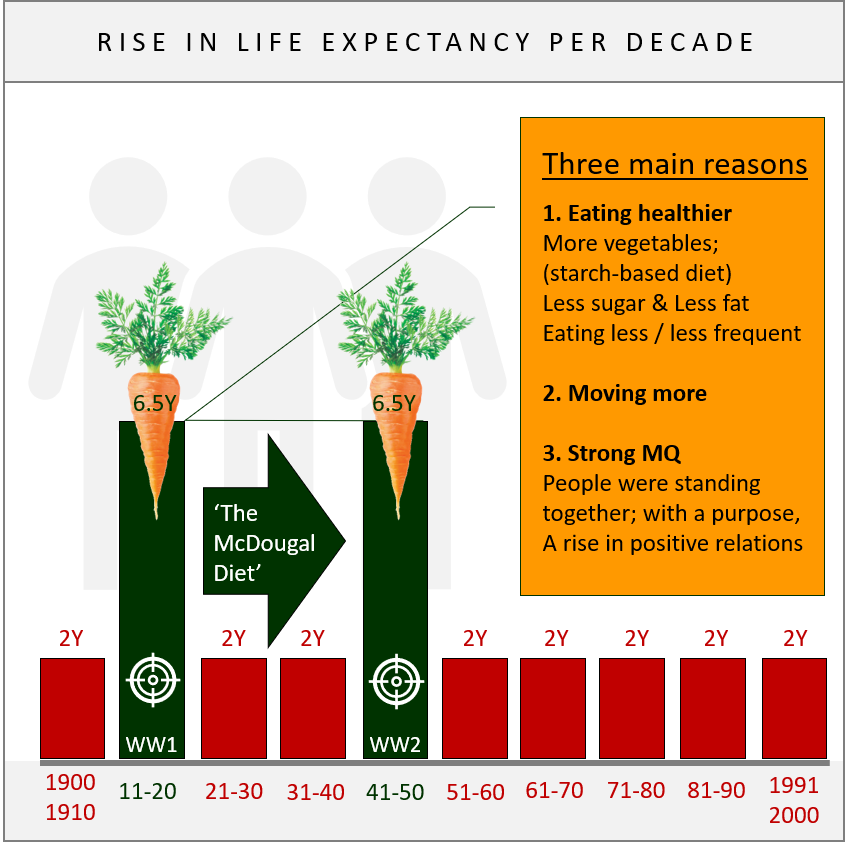Healthy Living
Health and wealth go hand in hand, and nations do not become wealthy until they are healthy.
The total costs of NCDs in 2030, will amount to five times the cost related to the financial crisis in 2008, which sky-rocked at USD 12.8 trillion. There is a tsunami of man-made illnesses sweeping Mother Earth, and the global strategies for conventional downstream treatments are not keeping up. To better control the exponential growth in healthcare expenditures, nations, as well as companies, need to focus on a proactive upstream approach built on sound health promotion initiatives.
There is in fact a strong correlation between Healthy Life Expectancy and World Economic Forum’s Global Competitive Index. Healthy Life Years is hence the new currency of economic growth and prosperity. Global Health is about Return on Health, as well as Return on Investments. Studies and initiatives show an average ROI of 5.6 - that means for every $ 1 invested in health, the return is $ 5.6. The smaller the units (e.g. companies) the ROI is even two to three times higher. Investment in health, really pays off, and give shareholders, as well as the public, a solid ‘earnings per share’.
World Life Expectancy
During the 70 years from 1950 to 2020, the global life expectancy rose from 45.6 years to 72.6 years. Out of these 27 additional years, people live 20% in disability.
These six additional unhealthy life years are driving up the overall healthcare expenditure.
There are so many things we can be grateful of with classical medicine. All from medicine, vaccination and the way we are treated, with the result that we live longer. There are however some pitfalls, with increased costs and addiction to medicine. The question is if there are ways to improve healthy life years and decrease cost?
Life Expectancy & cost
Higher health spending per capita is generally associated with higher life expectancy at birth, although this positive relationship tends to level off for countries with the highest spending per capita.
Women tend to live six years longer than men, at 83 years and 77 years respectively.
Life expectancy also depends on the socio-economic status of a person, as measured, for instance, by education level. Higher education levels do not only provide the means to improve the socio-economic conditions in which people live and work, but may also promote the adoption of more healthy lifestyles and facilitate access to appropriate health care. On average among 25 OECD countries for which data are available, women and men with the highest level of education at age 30 can expect to live four to seven years longer than people with the lowest level of education.
Life Expectancy development
Life expectancy rose in average two years per decade during the 1900s, except during the decades of WW1 (1910 - 1920) and WW2 (1940 - 1950). Then the life expectancy then rose between six and seven years. Why so?
The researchers found three main reasons.
1) People were eating healthier; as in more starch and less of sugar and fat.
2) People moved more, and
3) People had a stronger meaning intelligence (MQ), with a big portion of purpose, hope and standing together as a group.
health is an investment
Health is de facto becoming an investment when health expenditure is larger than the growth in GDP.
When the cost to conventional treatment is exponential, you need to be creative in preventive healthcare and by promoting a healthier lifestyle. Healthy life years is vital in improving individuals health & wellbeing, as well as having a sustainable and supportive healthcare system - that in turn will be a facilitator for GDP growth.
During the years 1995 to 2015, the global GDP had a CAGR of 4,6%. This balanced / funded the growth in health expenditure with a CAGR of 4,3%.
The global economy was estimated to grow by 2,4% year on year up from 2016 to 2030 - prior to the pandemic impact. The global health expenditure is now at wopping 13% yoy.
Now health is becoming a real investment, and the interesting thing is that no nation (or company) will not tap their potential without healthy employees.
Stay updated at:




